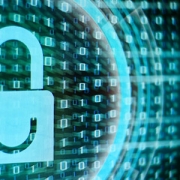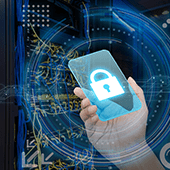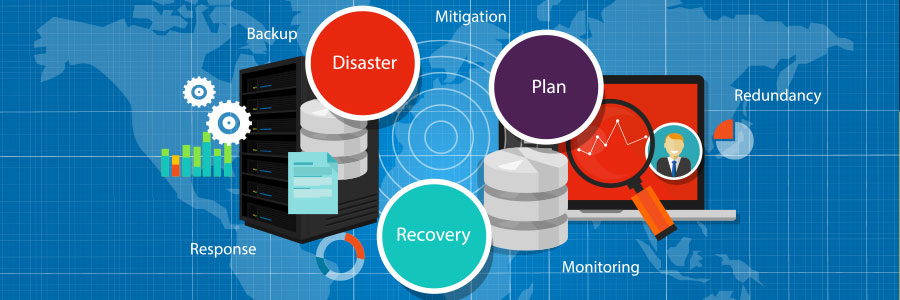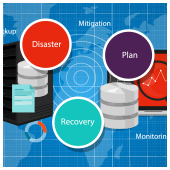Big companies like Yahoo, Target, and AOL are often at risk of data breaches because of the large volume of data they collect and store. And when a data breach occurs, individual users are the ones hardest hit. Luckily, there are a few things you can do to mitigate damage from disastrous data breaches.
Determine what was breached
Whether its names, addresses, email addresses, or social security numbers, it’s critical to know exactly what type of information was stolen before determining what steps to take. For example, if your email address were compromised, you’d take every precaution to strengthen your email security, which includes updating all your login credentials.
Change affected passwords immediately
Speaking of passwords, change yours immediately after any breach, even for seemingly safe accounts. Create a strong password comprised of alphanumeric and special characters, and make sure you never reuse passwords from your other accounts.
Once you’ve changed all your passwords, use a password manager to help you keep track of all your online account credentials.
If the website that breached your information offers two-factor authentication (2FA), enable it right away. 2FA requires two steps to verify security: usually a password and a verification code sent to a user’s registered mobile number.
Contact financial institutions
In cases where financial information was leaked, call your bank and credit card issuers to change your details, cancel your card, and notify them of a possible fraud risk. That way, banks can prevent fraud and monitor your account for suspicious activity.
Note that there are different rules for fraudulent transactions on debit cards and credit cards. Credit card transactions are a bit easier to dispute because they have longer grace periods. Debit card fraud, on the other hand, is more difficult to dispute, especially if the fraudulent transactions happened after you’ve notified the bank.
Place a fraud alert on your name
Hackers who have your personal information can easily commit identity fraud. To avoid becoming a victim, contact credit reporting bureaus like Equifax, Experian, or Innovis and request that a fraud alert (also called credit alert) be added to your name. This will block any attempt to open a credit account under your name and prevent unauthorized third parties from running a credit report on you.
Putting a credit freeze on your name might result in minor inconveniences, especially if you have an ongoing loan or credit card application. Still, doing so will greatly reduce your risks of getting defrauded.
These steps will ensure you don’t fall victim to identity theft in the event of a large-scale data breach. If you want to take a more proactive approach to protect your sensitive information against breaches, contact our cybersecurity experts today.



 New threats to businesses’ precious employee and customer data emerge every day, so the only surefire way to protect your files from viruses, theft, and other unforeseeable disasters is to partner with a leading cloud backup provider. With a basic understanding of how cloud backups work, you can set up a plan that is economical and customized to the needs of your business.
New threats to businesses’ precious employee and customer data emerge every day, so the only surefire way to protect your files from viruses, theft, and other unforeseeable disasters is to partner with a leading cloud backup provider. With a basic understanding of how cloud backups work, you can set up a plan that is economical and customized to the needs of your business.
 The massive success of ransomware like WannaCry and Petya have spurred other cybercriminals to develop their own ransomware and sell it on the black market. This means we can expect more ransomware attacks in the future. To prepare your business, you need virtualized disaster recovery solutions. Here’s why.
The massive success of ransomware like WannaCry and Petya have spurred other cybercriminals to develop their own ransomware and sell it on the black market. This means we can expect more ransomware attacks in the future. To prepare your business, you need virtualized disaster recovery solutions. Here’s why.
 Mark Zuckerberg and Elon Musk are not the only ones dabbling with AI and machine learning. According to Cisco, these technologies might be key to the future of IT system management and business continuity, both of which have grown increasingly complex over the years.
Mark Zuckerberg and Elon Musk are not the only ones dabbling with AI and machine learning. According to Cisco, these technologies might be key to the future of IT system management and business continuity, both of which have grown increasingly complex over the years.
 Hurricanes Harvey and Irma have already caused billions of dollars in damages, but hurricane season is far from over. Experts are predicting that there will be five more major tropical storms through October, and if they present risks to your business, it’s time to establish a watertight disaster recovery (DR) plan. Here are a few things you need to consider.
Hurricanes Harvey and Irma have already caused billions of dollars in damages, but hurricane season is far from over. Experts are predicting that there will be five more major tropical storms through October, and if they present risks to your business, it’s time to establish a watertight disaster recovery (DR) plan. Here are a few things you need to consider.
 While it’s easy to turn a blind eye against hurricane warnings and think “I already have a business continuity plan in place”, it pays to be extremely cautious, especially when the National Oceanic and Atmospheric Administration (NOAA) predicts up to four unusually active hurricanes this year. Needless to say, you simply can’t afford not to hurricane-proof your disaster recovery (DR) plan.
While it’s easy to turn a blind eye against hurricane warnings and think “I already have a business continuity plan in place”, it pays to be extremely cautious, especially when the National Oceanic and Atmospheric Administration (NOAA) predicts up to four unusually active hurricanes this year. Needless to say, you simply can’t afford not to hurricane-proof your disaster recovery (DR) plan.
 The WannaCry ransomware, a type of malware that encrypts a victim’s files and extorts them for money, has already affected thousands of machines worldwide. Unfortunately, the success of this attack is just the beginning. According to security researchers, other hackers will probably develop stronger WannaCry variants in the coming months. And if you don’t want your business to become a victim of these attacks, you must take the following precautions.
The WannaCry ransomware, a type of malware that encrypts a victim’s files and extorts them for money, has already affected thousands of machines worldwide. Unfortunately, the success of this attack is just the beginning. According to security researchers, other hackers will probably develop stronger WannaCry variants in the coming months. And if you don’t want your business to become a victim of these attacks, you must take the following precautions.
 It makes a lot of sense for electronics firms to pack a variety of functions into mobile devices and expand their usefulness. Instead of confining their use to communications, companies such as Apple, Samsung, and others have turned mobile phones into mini-computers that can serve as a substitute for your laptop, or as a storage device. If you’re using mobile phones as a communications and storage device, backing up now would be a wise move.
It makes a lot of sense for electronics firms to pack a variety of functions into mobile devices and expand their usefulness. Instead of confining their use to communications, companies such as Apple, Samsung, and others have turned mobile phones into mini-computers that can serve as a substitute for your laptop, or as a storage device. If you’re using mobile phones as a communications and storage device, backing up now would be a wise move.
 Failing to stop a cyber attacker, or to pass a disaster recovery plan (DRP) audit could be the product of focusing your efforts on the wrong educational resources. Because no matter how many conferences you attend, or how many certifications you receive, nothing beats real-world case studies. If that’s what you’re looking for, a state government office just gave us plenty to pore over. See for yourself.
Failing to stop a cyber attacker, or to pass a disaster recovery plan (DRP) audit could be the product of focusing your efforts on the wrong educational resources. Because no matter how many conferences you attend, or how many certifications you receive, nothing beats real-world case studies. If that’s what you’re looking for, a state government office just gave us plenty to pore over. See for yourself.
 When disaster strikes, organizations need to put their business continuity plans into action and recover their IT systems as quickly as possible. Failing to do so can mean serious financial and reputational repercussions. Despite this, investments in disaster recovery are set aside each year for high-tech IT investments, and every year companies and employees continue to suffer for it. Here are some reasons why disaster recovery is well worth your time, effort, and resources in 2017.
When disaster strikes, organizations need to put their business continuity plans into action and recover their IT systems as quickly as possible. Failing to do so can mean serious financial and reputational repercussions. Despite this, investments in disaster recovery are set aside each year for high-tech IT investments, and every year companies and employees continue to suffer for it. Here are some reasons why disaster recovery is well worth your time, effort, and resources in 2017.